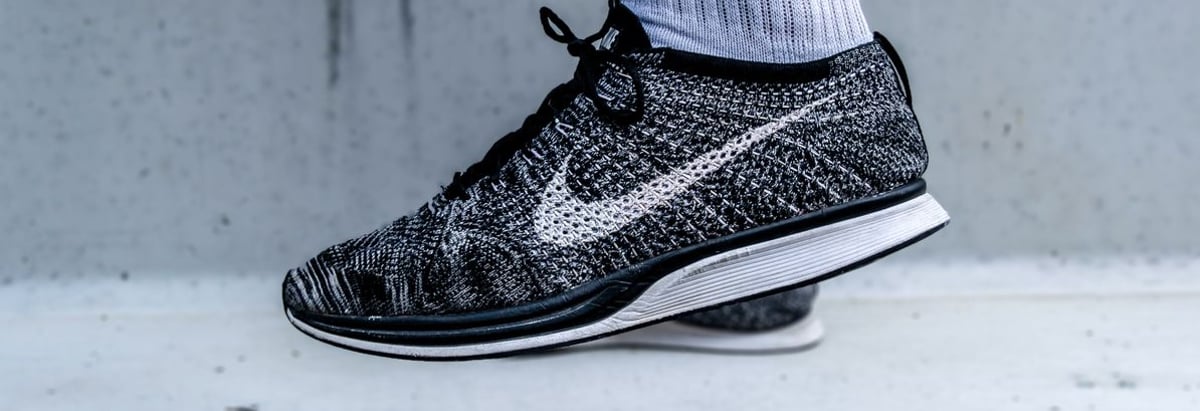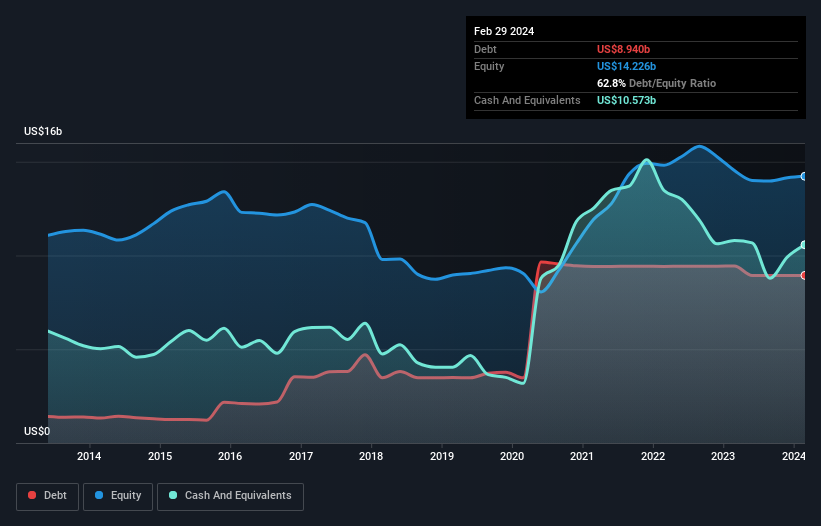
David Iben put it well when he said, 'Volatility is not a risk we care about. What we care about is avoiding the permanent loss of capital.' So it seems the smart money knows that debt - which is usually involved in bankruptcies - is a very important factor, when you assess how risky a company is. As with many other companies NIKE, Inc. (NYSE:NKE) makes use of debt. But the real question is whether this debt is making the company risky.
When Is Debt A Problem?
Debt and other liabilities become risky for a business when it cannot easily fulfill those obligations, either with free cash flow or by raising capital at an attractive price. Ultimately, if the company can't fulfill its legal obligations to repay debt, shareholders could walk away with nothing. However, a more common (but still painful) scenario is that it has to raise new equity capital at a low price, thus permanently diluting shareholders. Of course, debt can be an important tool in businesses, particularly capital heavy businesses. The first step when considering a company's debt levels is to consider its cash and debt together.
See our latest analysis for NIKE
What Is NIKE's Debt?
The image below, which you can click on for greater detail, shows that NIKE had debt of US$8.94b at the end of February 2024, a reduction from US$9.44b over a year. However, its balance sheet shows it holds US$10.6b in cash, so it actually has US$1.63b net cash.

How Strong Is NIKE's Balance Sheet?
We can see from the most recent balance sheet that NIKE had liabilities of US$9.03b falling due within a year, and liabilities of US$14.1b due beyond that. Offsetting this, it had US$10.6b in cash and US$4.53b in receivables that were due within 12 months. So it has liabilities totalling US$8.03b more than its cash and near-term receivables, combined.
Of course, NIKE has a titanic market capitalization of US$144.5b, so these liabilities are probably manageable. Having said that, it's clear that we should continue to monitor its balance sheet, lest it change for the worse. While it does have liabilities worth noting, NIKE also has more cash than debt, so we're pretty confident it can manage its debt safely.
But the other side of the story is that NIKE saw its EBIT decline by 2.9% over the last year. If earnings continue to decline at that rate the company may have increasing difficulty managing its debt load. When analysing debt levels, the balance sheet is the obvious place to start. But ultimately the future profitability of the business will decide if NIKE can strengthen its balance sheet over time. So if you're focused on the future you can check out this free report showing analyst profit forecasts.
But our final consideration is also important, because a company cannot pay debt with paper profits; it needs cold hard cash. NIKE may have net cash on the balance sheet, but it is still interesting to look at how well the business converts its earnings before interest and tax (EBIT) to free cash flow, because that will influence both its need for, and its capacity to manage debt. During the last three years, NIKE produced sturdy free cash flow equating to 79% of its EBIT, about what we'd expect. This free cash flow puts the company in a good position to pay down debt, when appropriate.
Summing Up
We could understand if investors are concerned about NIKE's liabilities, but we can be reassured by the fact it has has net cash of US$1.63b. And it impressed us with free cash flow of US$6.2b, being 79% of its EBIT. So we don't think NIKE's use of debt is risky. Above most other metrics, we think its important to track how fast earnings per share is growing, if at all. If you've also come to that realization, you're in luck, because today you can view this interactive graph of NIKE's earnings per share history for free.
If, after all that, you're more interested in a fast growing company with a rock-solid balance sheet, then check out our list of net cash growth stocks without delay.
Valuation is complex, but we're here to simplify it.
Discover if NIKE might be undervalued or overvalued with our detailed analysis, featuring fair value estimates, potential risks, dividends, insider trades, and its financial condition.
Access Free AnalysisHave feedback on this article? Concerned about the content? Get in touch with us directly. Alternatively, email editorial-team (at) simplywallst.com.
This article by Simply Wall St is general in nature. We provide commentary based on historical data and analyst forecasts only using an unbiased methodology and our articles are not intended to be financial advice. It does not constitute a recommendation to buy or sell any stock, and does not take account of your objectives, or your financial situation. We aim to bring you long-term focused analysis driven by fundamental data. Note that our analysis may not factor in the latest price-sensitive company announcements or qualitative material. Simply Wall St has no position in any stocks mentioned.
About NYSE:NKE
NIKE
Engages in the design, development, marketing, and sale of athletic footwear, apparel, equipment, accessories, and services worldwide.
Excellent balance sheet established dividend payer.
Similar Companies
Market Insights
Community Narratives



